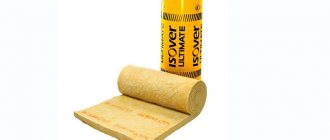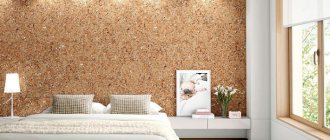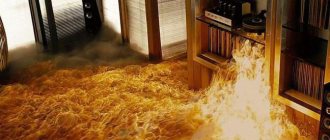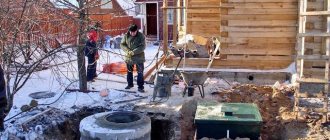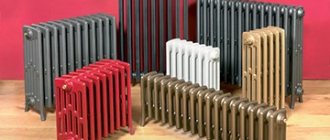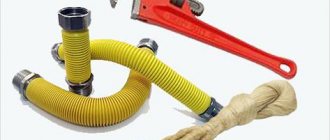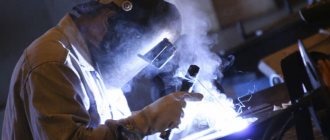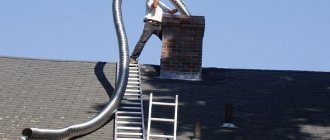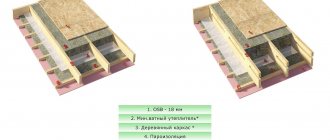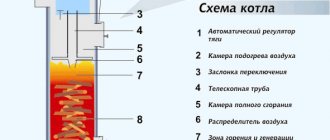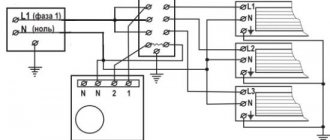Any sealing of polyurethane foam will take a little time, effort, it is easy and simple to work with it.
Polyurethane foam is a polyurethane sealant produced in special cylinders with a volume of 500, 750 ml. It is very easy to use, does not require additional equipment (except, of course, professional types). Due to its main properties, polyurethane foam fills any space, bridges cracks, fills voids, and connects various materials. This facility can get to any hard-to-reach places due to its ability to expand, increasing in volume.
Polyurethane foam can be used for:
- connections;
- sealing;
- noise insulation;
- thermal insulation.
This tool is widely used in construction and industry.
Sealing occurs by filling various cracks in cold rooms, in roofing materials, filling up voids when installing doors and windows.
Very often we are faced with the problem of unpleasant noises associated with the operation of air conditioners, pipes, hoods. The main reason for this is the appearance of cracks, which in turn cause rattling and various sounds that act on our nerves. A great way to eliminate this problem is noise insulation with polyurethane foam
... Due to its properties, this tool does not let in unnecessary sounds, and by closing the cracks, you will get rid of drafts and rattling. In addition, polyurethane foam is a good option for soundproofing the whole house or a separate room. So you can not only insulate your room, but also get rid of extraneous sounds from the street and from neighbors.
Now it is very difficult to find a good polyurethane foam on the market that would meet all the parameters. Sometimes manufacturers use low-quality material to lower the cost of their products, and this is what primarily affects consumers.
Belinka company always monitors the production, is responsible for each product.
For example, BELINKA BELPUR PU FOAM GUN polyurethane foam has all the necessary properties. A high degree of adhesion allows it to be used with all materials, it quickly adheres to the surface, does not crumble when solidifying, and is able to withstand the chemical attack of weak acids and alkalis. It is necessary to work with such polyurethane foam using a special assembly gun.
But this does not mean that you will have difficulties in completing the task, on the contrary, working with such material is easy, simple. Remember that you need to take care of such a gun, wipe it with a special solution after each use, then it will serve you for many years. The curing time depends on the level of temperature, humidity, so for the best effect, you can moisten the surface to be treated with water. Full hardening will occur in about 5-12 hours. Thanks to new technologies, manufacturers have achieved a longer shelf life, now the polyurethane foam can be stored for a little more than a year, which cannot be said about other one-component polyurethane foams. This tool is ideal for sealing and soundproofing. The price offered by Belinka cannot but please.
It should be remembered that the polyurethane foam hardens very quickly, "tightly", it is quite difficult to remove it, so wear clothes and special gloves for protection.
Any polyurethane foam does not tolerate ultraviolet rays well, so at the end it should be treated with paint, sealant, plaster, then it will last much longer.
Polyurethane foam is known to have excellent soundproofing properties. In particular, it is in demand if it is necessary to make noise insulation of a balcony, loggia or window opening. In this section on sound insulation and sound insulation with foam, we will tell you what role the use of foam plays in the process of creating acoustic comfort.
Reasons for the penetration of noise into the house
Very often, ordinary window openings are the reason for the penetration of unwanted noise into the room. The thing is that certain voids are formed between the window profiles and the walls. Sound, with its consistent movement, invariably strives to occupy them. To keep unwanted sounds from getting inside, many acoustics specialists often use building foam in their work. Even during the replacement of ordinary double-glazed windows, you probably could observe a situation when employees of any company apply polyurethane foam after replacing double-glazed windows. And this is a completely justified choice in favor of quality material.
installation of soundproofing
Those who live in a panel house, every day, encounter poor sound insulation of their apartment, then neighbors walk loudly, then someone on the 5th floor is working with a drill. And everyone has a desire to do the installation of soundproofing of their apartment. We will give some tips on how to do this. Today there are a number of special acoustic materials and building acoustics technologies designed to increase the sound insulation of an apartment. This is a device for the construction of a floating floor, installation of sound insulation for a suspended ceiling, the construction of additional soundproof wall cladding with the use of soundproof fasteners. All these methods of soundproofing installation are quite effective, but require rather large financial costs for special materials and installation work. But there is not always time and finances for expensive repairs, you can often do without all this, simply by eliminating some of the builders' flaws. There are quite effective measures that you can apply in practice on your own. Despite the outward simplicity of the recommendations set out below, their implementation can significantly improve the acoustic comfort in an ordinary residential apartment of a panel house. 1. Soundproofing of sockets An electrical outlet mounted on an apartment wall is very often one of the most likely pathways for noise from neighbors to enter. It is easy to verify this by simply putting your ear to it (just try not to get an electric shock). The fact is that in some reinforced concrete wall slabs, even at the production stage, through holes are provided for the installation of electrical accessories. Then the builders simply install the sockets in two adjacent apartments, while leaving a through channel through which noise can almost freely enter your apartment.
Tip: Disassemble the electrical outlet and back box in accordance with electrical safety regulations. You may also see the bottom of the neighbor's socket box. Insert a “washer” made of dense mineral wool, asbestos cloth or basalt cardboard into the hole. Then seal the hole with plaster putty or cement mortar so that there is room for your electrical outlet. It is recommended to use the services of an electrician for this operation. Note: Do not use polyurethane foam to seal the hole without plastering it. Polyurethane foam is not a sound insulating material and, moreover, is highly flammable. 2. Sound insulation of electrical installation boxes Junction boxes for connecting electrical cables are usually located under the ceiling in the central part of the apartment walls. Often they are hidden under the wallpaper, but they can be easily detected by “tapping”. Very often, junction boxes are installed in through-holes in the walls and covered with thin plastic covers.
Advice: It is recommended to perform soundproofing of installation boxes by analogy with electrical outlets, but always with the assistance of an electrician. It is not recommended to twist electrical cables yourself. 3. Insulation of risers of heating and water supply systems Risers of heating and water supply pipelines, according to building codes, must be laid through the floors using vibration-insulated sleeves. For this, a metal pipe of a larger diameter in comparison with the riser is embedded in the ceiling. The gap between the two pipes must be filled with a non-combustible sound-absorbing material and sealed with a non-hardening sealant. In practice, this is often not done. The builders either do not fill up the cracks in the liner with mineral wool, or they simply do not use the liners, sealing the riser directly into the ceiling with cement mortar. After many years of operation, gaps must appear between the riser pipe and the floor slab. Sound from neighbors below and above can freely penetrate into your apartment through cracks and leaks. In some cases, undesirable odors also penetrate through such slots.
Tip: If the riser is routed through an overlap in a sleeve, it is recommended to seal the gap between the sleeve and the riser with a heat-resistant silicone sealant. If the riser is laid directly through the ceiling, around the pipe it is necessary to clear and remove the damaged layer of cement mortar as deep as possible (avoiding penetration into the neighboring apartment). Then it is recommended to wrap the base of the pipe with a sound-insulating material (for example, fiberglass "Vibrostek" or asbestos cloth) and cement the damaged section of the floor and / or ceiling. Surplus insulating material is cut off and the joint is sealed with silicone sealant. 4. Sound insulation of joints between the floor and walls Deep cracks very often appear in the places where the floor slab joins the walls. This is due to poorly executed construction joints and the low quality of the leveling floor screed. Cracks and cavities that form over time can serve as a good conductor of sound from a neighboring apartment.
Tip: Remove the skirting boards around the room. If possible, use a chisel and a hammer to make a seam 30-50 mm wide along the walls in the floor to the full depth of the screed. Fill the joint with fresh sand-cement mortar. After the cement mixture has dried, treat the joint with a non-hardening silicone sealant. If parquet is laid in the apartment and partial dismantling of the screed is impossible, then just carefully fill the expansion joint between the wall and the edge of the parquet flooring with silicone sealant. Then secure the skirting boards in place. 5. Sound insulation of joints between wall-to-wall and wall-to-ceiling panels Long-term operation of panel houses, as a rule, leads to the formation of deformation cracks between reinforced concrete slabs of walls and ceilings. These cracks are "life companions" of almost all residents of panel houses. Very often they hide behind wallpaper and do not violate the appearance of a residential apartment. However, these cracks can serve as a conduit for noise from the neighboring apartment. Tip: Remove your old wallpaper. Sew up the joints between the concrete panels. Fill the resulting voids and cavities with gypsum plaster or cement mortar. After the putty has dried, coat all wall-to-wall and wall-to-ceiling joints with acrylic sealant.After removing the excess acrylic sealant, you can paint or paste over the room with new wallpaper. 6. Sound insulation of windows The apartment can be penetrated not only by the traffic noise of the street, but also by the sound of the music center from the neighboring apartment. Replacing old wooden windows with metal-plastic window structures can solve this problem, but often a simple modernization of an old window leads to an even better result. It should be noted that often after dismantling old wooden windows and installing metal-plastic ones, some sounds from intra-house sources become more audible. This is due to the disappearance of the effect of masking these sounds by street noise.
Tip: To increase the sound insulation of the old window, it is recommended to replace the existing 4mm glass with thicker ones, for example 5 or 6 mm. Before installing the new glass, generously coat the installation places of the window sash around the entire perimeter with a transparent neutral silicone sealant. Press the glass firmly into the silicone "bead" in the sash. Then fit the glazing beads and remove excess silicone. In each window sash, along the entire contour of the vestibule, fix a rubber seal with a cross-section in the form of the letter "D". Today in hardware stores there is a fairly wide selection of various inexpensive seals. If the window is difficult to close after sealing the vestibule, you will have to turn to the services of a carpenter. All these tips are effective if the sashes in old windows have not been strongly deformed from time to time. If you nevertheless decide to purchase metal-plastic windows, then remember that double-chamber double-glazed windows, as a rule, do not provide higher sound insulation compared to single-chamber double-glazed windows of the same width and the same total glass thickness. Note: It is not recommended to level the window slopes with drywall sheets. Resonance phenomena in air pockets can significantly reduce the sound insulation of a window. It is best to use cement-sand plaster for finishing the slopes. 7. Noise insulation of entrance doors Unfortunately, increasing the soundproofing of the entrance door will not be able to reduce the noise from the movement of the elevator car or the operation of the elevator winch (these noises propagate through the building structures), but it will help get rid of the noise from the neighboring apartment, the noise of the closing elevator doors, the sound of heels on the stairs and other household noises ...
Advice: It is recommended that the entrance group to the apartment be made in the form of a vestibule. In this case, the outer door must have anti-burglary properties, and the inner door can be decorative. To ensure high sound insulation, it is necessary that the doors in the closed position do not have cracks and leaks in the fit of the door leaf to the frame. To do this, the door frames must necessarily have a threshold and a sealing gasket throughout the porch. As a gasket, it is best to use profile rubber seals with a "D" cross-section. The difference in sound insulation of a door with and without a threshold can reach 10-15 dB. Very often, builders fill the mounting gap between the door frame and the doorway with foam, and through it the sound easily penetrates into the apartment from the common corridor. In this case, it is necessary to remove the polyurethane foam and fill the installation gap and all voids in the box with cement mortar. After the cement mixture has dried, the places where the door frame adjoins the wall structure must be carefully sealed with silicone sealant to prevent the appearance of deformation cracks in the future. 8. What not to do Very often, builders recommend sticking foam sheets on walls or ceilings to increase sound insulation and then plastering them.In fact, such a "soundproofing structure" does not increase, and in most cases even decreases (!!!) the soundproofing of the fence. This is due to resonance phenomena in the described design in the area of the speech frequency range. For example, if such a cladding is mounted on both sides of a heavy concrete wall, then the decrease in sound insulation can reach 10-15 dB! It should be noted that the use of materials such as polyethylene foam, polypropylene foam, cork, etc. instead of foam can lead to the same disastrous result. Do not trust the advice that provides for fixing on the surface of the walls or ceiling of some "super-effective" soundproofing materials with a thickness of no more than 5-10 mm. Do not trust the advice that provides for the installation of sound insulation of structures with a total thickness of no more than 10-20 mm. The main factor that exposes such advice is the presence of the problem of sound insulation itself. If such thin sound-insulating materials existed in nature, then the problem of noise protection would be solved even at the stage of building design and would be reduced only to the choice of the appearance and price of such materials. In fact, the minimum thickness of the soundproofing structure, the effect of which will be obvious and tangible, is at least 40-50 mm. We hope that the above recommendations will help improve the comfort of living in panel houses without significant financial investments.
See also:
Initial investment Where to open Franchise Management Human resources
Advantages of construction polyurethane foam
Polyurethane foam has a number of significant advantages in nature. This explains its frequent use today. In particular, building foam is sold in a liquid state after use, it increases significantly in volume. Another very important and trustworthy property is the ability to quickly harden. It takes just a few minutes for the foam to harden. It is a building material that is versatile in its effect; it has excellent contact with wood, concrete and numerous other surfaces.
For an individual selection of sound insulation solutions, please call our expert.
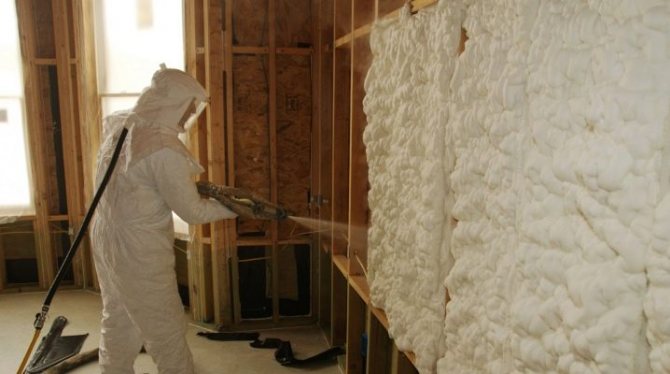
Spending time in your own home, hunting to take a break from everyday worries and extremely comfortable. But sometimes extraneous noises prevent this from happening. It turns out that sound insulation is one of the main conditions for a comfortable stay. In this case, soundproofing foam, that is, liquid soundproofing or other types, will help.
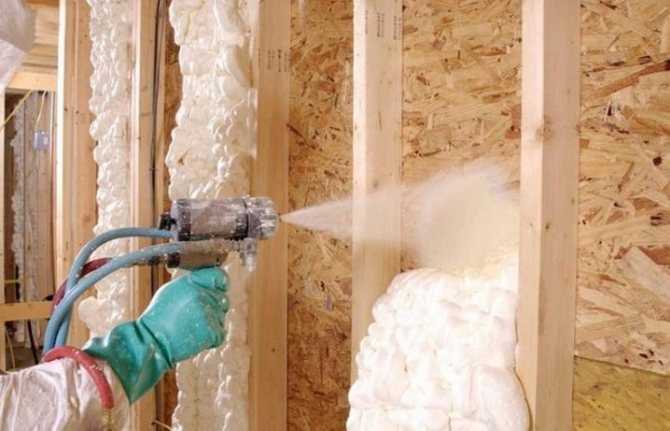

Solution Benefits
If we talk about the most popular type of sprayed polyurethane foam - closed-cell, then there are several main advantages of its use as a noise-insulating layer:
- Ease of application. After mixing, liquid components are sprayed using a special device and the resulting "foam" has excellent adhesion to any substrate. This will allow you to machine both horizontal and vertical or inclined planes.
- The speed of work. Everything happens extremely quickly - it will take only a few hours to apply polyurethane insulation.
- No seams or gaps during coating. The foam-like material will perfectly fill all voids, cracks and no joints or seams will form during application - it will completely cover the surface in one continuous layer. Accordingly, there will be no noise bridges.
- Construction waste is not generated.
- It is not required to carry out any preparatory work, as well as to adjust the insulation fragments or fix something.
- The environmental friendliness of such coatings is at the highest level. The material does not emit harmful substances and does not have an unpleasant smell.
- The low weight of polyurethane foam, due to its structure, makes it possible to apply insulation even on the thinnest partitions.
- With its closed-cell porous structure, polyurethane foam is 98 percent gas-filled, making use of its ability to thermally insulate treated surfaces.
Types of noise
There are many different noises, here are some of them:
- Airborne noise. This noise is especially annoying, it causes an uncomfortable state. Airborne noise is reproduced when driving vehicles and due to the work of equipment outside the window. Loud-voiced neighbors or passers-by, sounds made by animals (dogs, cats and others) - all this includes air-type noise.
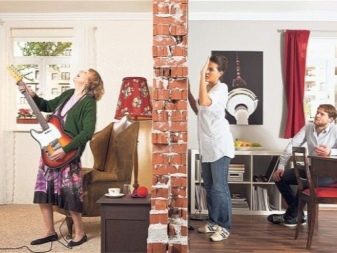

- Impact noise. This kind of noise appears due to some kind of knocking. The annoying sound of the percussive variety produces air turbulence and knocks can be heard over long distances.
- Structural noise. Occurs in ventilation ducts, from improper operation of the water supply. Unpleasant structural sounds can be heard through different devices in the room. These are various communications for heating, water supply and ventilation.


Insulation with polyurethane foam
Not long ago, sprayed sound insulation was not available to the average homeowner. Its price was much higher than that of other methods. The cost of consumables and related funds was high, and the procedure itself was almost inaccessible. Recently, the development of the production of raw materials for the manufacture of polyurethane foam makes it possible for everyone to equip housing with such insulation.
Thanks to the sprayed protection against sounds, you can isolate yourself from various types of noise at a cost comparable to other types of sound insulation.
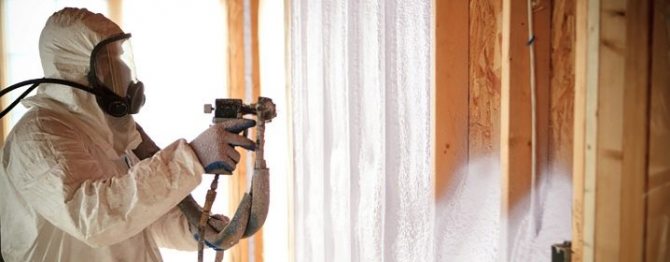

Where to start soundproofing
Complete soundproofing of the apartment is carried out at the beginning of the renovation, at about the same time as the laying of power grids and other communications, rough wall decoration. Therefore, it is best to deal with this issue even at the stage of developing a design project. Then you will not be limited by anything when choosing soundproofing systems, and you can also freely fit them into the general repair plan, using the cladding of structures to prepare walls and ceilings for finishing.
An integrated approach also allows you to identify sources of noise and develop ways to combat them, as well as pay attention to rooms that need enhanced protection - a bedroom, a nursery, an office, etc.
Although in some cases partial measures can be dispensed with, for example, soundproofing water pipes, a wall near an elevator or increasing the soundproofing properties of an entrance door, it should be understood that partial soundproofing is not very effective. The most effective result is achieved only when processing all surfaces - walls, floors, ceilings, window and doorways.
Features of the
The soundproofing of the room with polyurethane foam is made by jet spraying the composition of some reagents, namely:
- polyester in interaction with a polyisocyanate, forming a foam with a high expansion;
- flame retardants that prevent smoldering and corrosive smoke in the event of a fire.
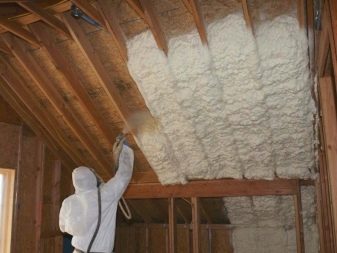

After combining the components in a spray gun and applying them to the plane of walls or other surface, instant polymerization and hardening of polyurethane foam occurs.
Excellent sound insulation is formed, and all due to the fact that 90% of the formation is finely dispersed air bubbles.
People who simply need soundproofing of a dwelling can turn to the help of companies that offer a full range of services. Many of them are stocked with materials that meet safety standards, the latest technology and affordable prices.
Features of thin noise isolation
Recently, thin soundproofing materials have become quite common, which provide protection without losing living space.
They are called soundproof membranes. They can be installed not only on walls, but also on ceilings, partitions or floors.
Thin soundproofing of walls has a number of significant advantages:
- The product is only 3.7 mm thick. The material is able to provide maximum sound insulation with minimal loss of space.
- There are practically no other protection options with the same effectiveness.
- The product is made from environmentally friendly components. The composition is free of bitumen and rubber. The material itself is strong enough and has an increased service life. It is these characteristics that ensured such popularity of membranes.
- Installation of products is quite simple, even a person who does not have construction skills can handle it. A structure is created, the thickness of which does not exceed the 5 cm mark. At the same time, the noise level will be reduced by about 70%.
Installation of the membrane begins with the installation of the frame
For the installation of membranes, you will need to build a metal frame; its fastening will be carried out using a direct suspension.
This is what will allow you to save most of the space. The procedure is as follows:
The length of 1 roll of membrane is 5 m, and the width is 1.25 m. The weight of 1 m² of material is approximately 8 kg.
Advantages of the method
When performing sound insulation of the walls of PPU housing by spraying the composition onto the base, an additional number of problems are solved at the same time:
- Thermal insulation of a room without seams with a service life of up to thirty years.
- Waterproofing walls in rooms with high humidity, for example, in a bathroom or kitchen.
- Soundproofing the floor covering, in addition to absorbing extraneous noise, creates a layer on top of the screed that absorbs moisture in the amount of two percent. Whereas expanded polystyrene absorbs up to ten percent moisture.
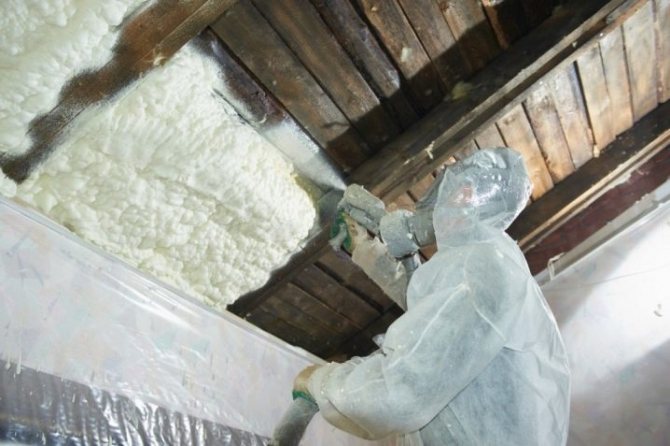

- Rooms with a corner arrangement in a panel building will have thermal insulation and protection from fungi and mold, due to a decrease in the vapor permeability of the walls from the street side.
- Noise insulation of the ceiling surface in the room will not need auxiliary suspension devices and difficult repairs, it is perfectly hidden under tension-type ceilings.
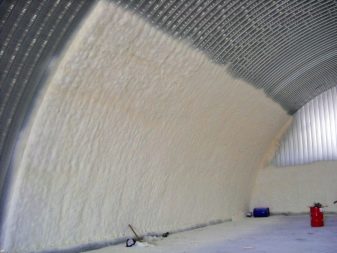

- Polyurethane foam perfectly interacts with any surface, which makes it possible to spray over any base, including surfaces made of concrete, wood and gypsum fiber. At the same time, he fills all the seams and flaws in the evenness of the plane.
- The use of polyurethane foam in a wooden house eliminates the installation of interlayers in the ventilation system and waterproofing, making it possible to spray from the inside onto the plane of the roofing material.
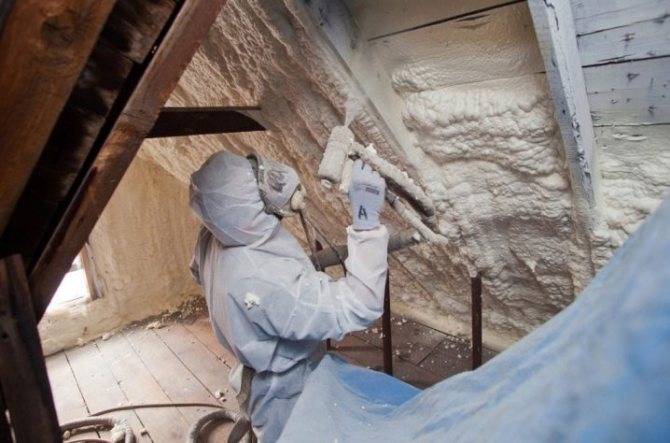

Real view when fully disassembled
Read on to the end, as the most effective methods are shown at the end of my review!
So, the first step is to start with the external elements, which play an important role. On the bottom side, plastic shields are installed along the entire length of the car, which also dampen a lot of noise from tires and the road.
From the engine compartment, the sound is hindered by the small thickness of the black felt, and it looks like this:
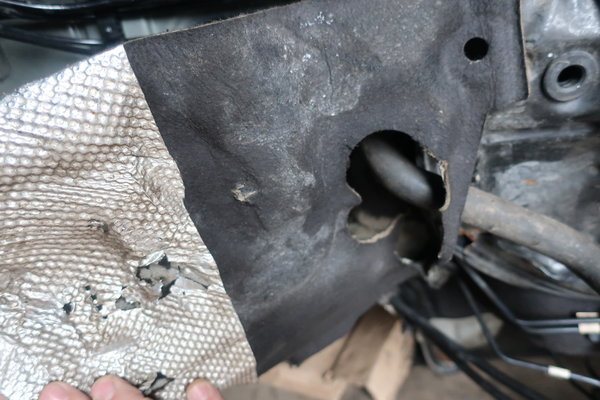

You will not see anything surprising here, since there are similar areas even on the cheapest cars, up to our VAZs. But the following points are already inherent in more expensive models and we are talking about fenders.
Of course, they are not plastic, but already made of a soft material such as felt, which also helps to keep sound in the arches and prevent it from getting into the cabin.
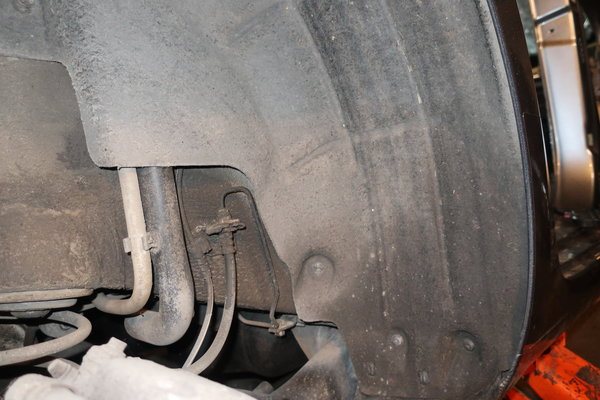

Lockers of this type are definitely used both on the Octavia A7 and on the Jetta 6, unfortunately I have no information on the rest of the models.
Now we go further and it is worth paying attention to the internal sound insulation of the body. On the floor, as expected, molded insulation is laid, which also absorbs a lot of unnecessary sounds:
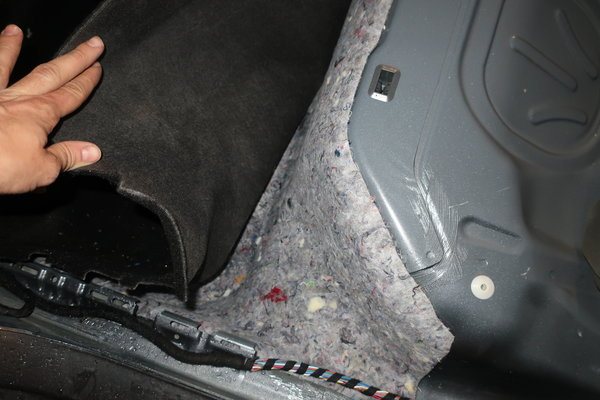

The front of the panel is also pretty well equipped with a sound absorber, and looks something like this:
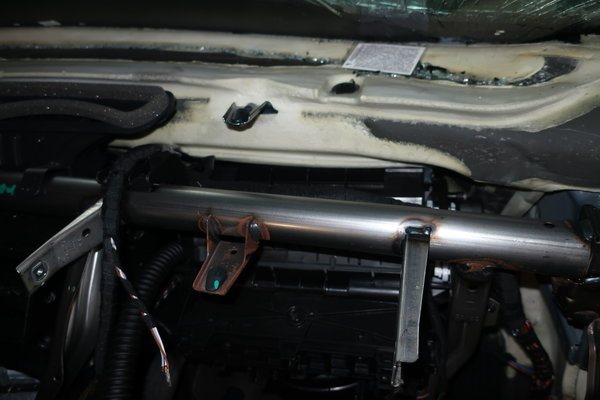

This thick layer is literally on top of the heater, which certainly reduces the noise from the stove fan. If you think that this is ineffective, I suggest listening to the operation of the motor without any "protection".
Now we move further through the cabin and look at the roof, or rather the inside, and we also see rather thick sheets of Shumka, which on the same Jetta are no longer in that amount:
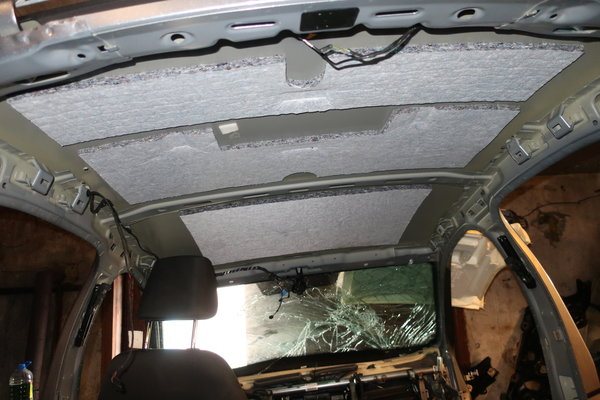

In the luggage compartment on the floor there is also our usual "cotton wool", which is a decent noise insulator according to the experience of most car manufacturers.
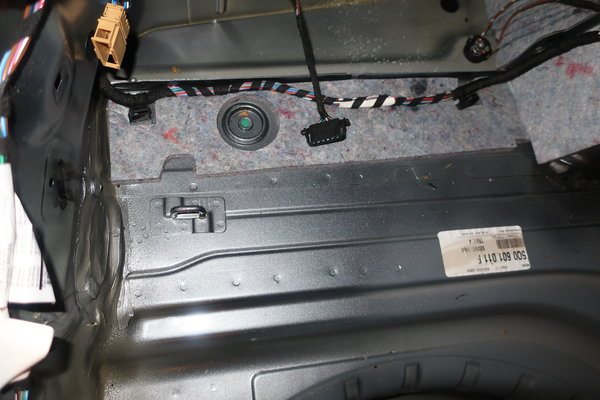

And on the arches it is already a little more than on the floor, as you can see for yourself:
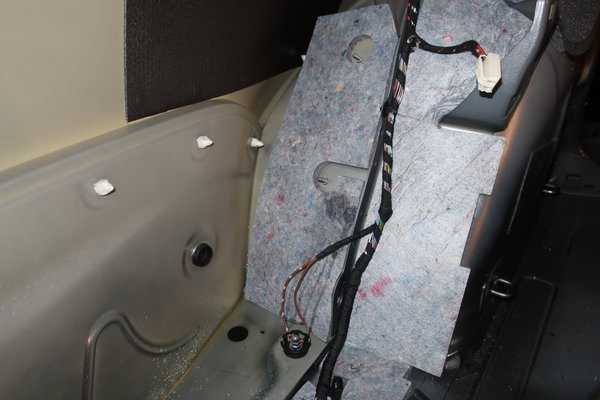

Another nice thing that pleases the eye - even the seat belts are protected by special covers, which are also designed to reduce noise during the operation of the inertial coils.
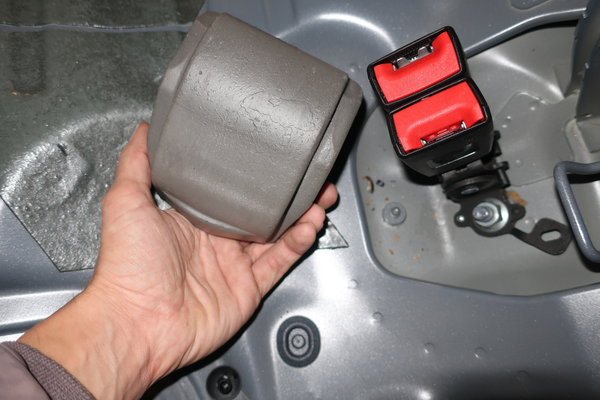

And the most interesting thing, as promised, is the noise absorbers in the thresholds, from where the sound from outside is the strongest. They are foamed inside and, in fact, filled with a porous compound that is most effective at dealing with noise.
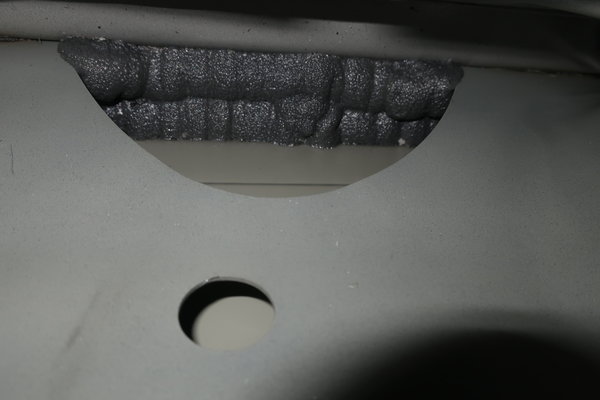

People who are unenlightened in this matter may think that this is the result of a collective farm repair of bodyworkers, but rest assured that this is factory-made and for VAG this is the norm, although I do not exclude that other manufacturers also foamed thresholds.
As for the doors, it should be said that no special layers were found, but plastic plugs on every technological hole do their job.
Application area
The materials used to make foam from polymers have a large multiplicity, the volume of the composition expands up to twenty times, which justifies restrictions in use:
- the temperature of the sprayed surface should be no higher than 100 degrees;
- do not need to be exposed to direct sunlight or other ultraviolet exposure.
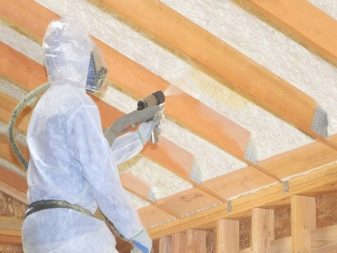

This can happen when:
- insulation of the outer parts of the building or structural parts devoid of finishing material;
- heat insulation of pipes designed for the passage of liquids at high temperatures.
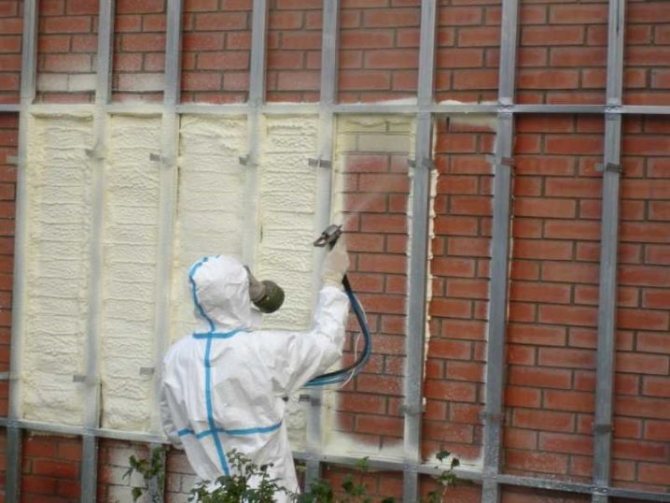

The method of spraying polyurethane foam is used in the following areas:
- soundproofing floors in dwellings and walls in houses built of panels, wood or bricks;
- thermal insulation of not very heated pipelines, laid above the ground or buried at a shallow depth from the ground;
- thermal insulation of refrigerating chambers, refrigerators of various modifications and purposes.
Polyurethane foam spraying method
Soundproofing of the ceiling in multi-storey buildings is applied by continuous spraying of the composition of interacting reagents onto the surface of the base in several approaches, the number of which is determined by the thickness of the ceiling from the upper floor and depending on the financial ability for installation work. If suspended ceilings made of plasterboard are provided, then before starting the spraying of insulation, it is necessary to install the structure of the ceiling frame, and when equipping the ceiling with tension material, there is no need for these actions, since the main parts are mounted on the walls.
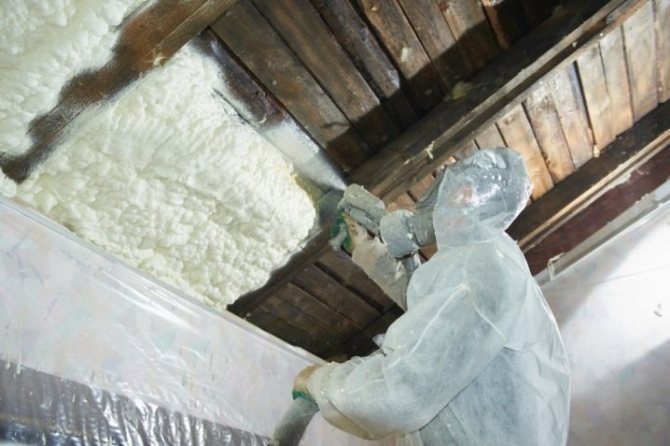

Sound insulation on the floor is done in two ways:
- between the lags, on which the floorboard is laid;
- on the ceiling from the lower floor, which forces the polyurethane foam to be poured with a concrete solution of fifty millimeters thick.
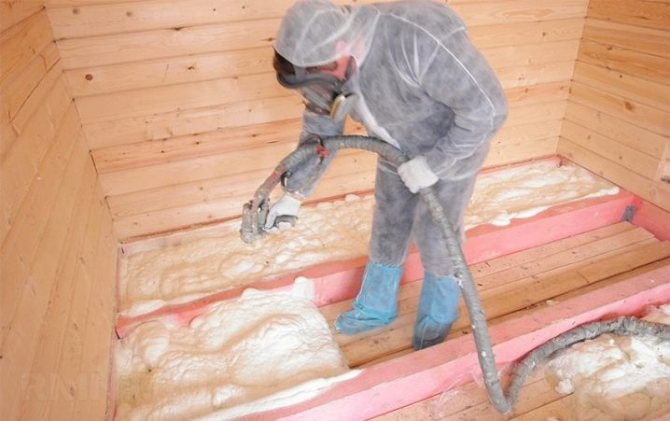

Before applying polyurethane foam to partitions between rooms and external walls, it is necessary to install the battens using wooden bars or metal profiles, which make it possible to attach a mesh for plastering or sheathing with sheet building materials.
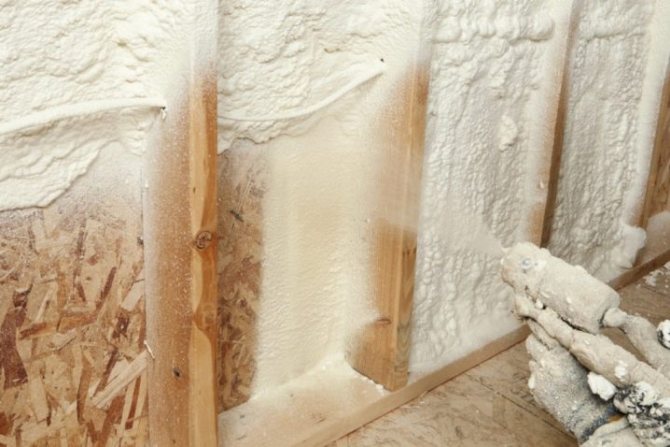

Master classes: how to make noise insulation
Regardless of what material will be chosen to carry out the soundproofing of a steel bath with your own hands, the first step will be to prepare the surrounding space for work.
It boils down to the following steps:
- turn off the water supply;
- disconnect the bath;
- close the floor in the bathroom with plastic or newspapers.
After that, you can start preparing the insulated surface:
- clean the outside of the bowl from dust;
- degrease the area to be insulated;
- seal the drain and overflow holes with masking tape;
- protect edges and uncoated areas from accidental damage.
Technical plug
When deciding to glue the bathtub with a cork, you can use rolls designed for flooring. The thickness of this material is 3 mm. When choosing an adhesive, it is necessary to focus on the option that involves application to both surfaces.
The brands "Wacol" and "Сork House" are considered optimal because they:
- are not toxic;
- moisture resistant;
- do not contain solvents.
Since the cork crumbles a lot when bent, it must be cut into pieces that exactly match the area of the cover. After applying the glue, it is necessary to wait 15-30 minutes and only then proceed to fixing the canvas.
The final stage will be rolling with a rubber roller. It is necessary to eliminate irregularities and air bubbles.
In order not to spoil the design of the bathroom, the bowl covered with a cork can be closed with a screen.
Polyurethane foam
After completing the general preparatory steps, you need to move on to creating a mesh that will ensure the adhesion of the polyurethane foam to the bath surface and give the created insulation strength. This is done with silicone or liquid nails.
The next step is directly foam treatment. Insulation is carried out starting from the sides. You need to move up in circular motions until the entire surface of the bath has been processed. To improve thermal insulation, you can cover the foam with a layer of polyethylene. After that, you need to let the material harden. This will take about 24 hours.
When choosing the composition of the insulation, it is recommended to give preference to polyurethane or “summer” foam. This variety expands faster and is resistant to temperature increases.
If the foam cylinder does not have a holder, then you will need to use a special gun. When working, you should observe safety precautions, use gloves and goggles.
Foamed polyethylene
Foamed polyethylene is sold in rolls. The main task when applying this material is to ensure that there are no air bubbles. Therefore, it must be cut into mats of suitable size.
The use of this insulating material does not require any glue. One of its sides already has a sticky layer. To fix it, it is necessary to remove the protective film and press firmly against the surface of the bath. After that, smooth out thoroughly.
Liquid acrylic
Liquid acrylic is applied to the degreased bath surface. Before starting processing, you need to make sure that the solvent used in the preparatory stage is completely dry. The material is applied in a circle in a bulk manner. A rubber trowel is required for leveling.
It takes no more than 2 hours to cover the bowl.
The disadvantages of this insulating material include the following:
- acrylic layer thickness no more than 5 mm;
- strong odor during processing;
- long drying (2 days).
Special materials
For soundproofing the bathtub, vibroisol and vibroplast are also used. These materials are made for cars.
The basis includes:
- bitumen;
- rubberized base;
- foil-clad outer layer;
- adhesive composition on the inner layer.
It is recommended to heat the sticky surface with a household hair dryer before application. This will make the material more elastic and flexible.
You can save money by applying the coating not to the entire surface of the bath, but only to the area where the water falls. This will still reduce the noise generated. A combination of basalt wool with soundproofing boards is also used.
Plumbing shops offer a special set of pads, such as the BWS bathtub set. Its disadvantage is the lack of thermal insulation.
If you need to protect yourself from noise ...
A modern soundproofing or sound-absorbing mixture has mostly only positive reviews. All homeowners intrigued by the properties of the polyurethane foam spraying technique can contact trading companies, whose professional staff can help make the home isolated from extraneous noise in houses built from any building material. The calculation of the final cost of the work will be made based on the results of measurements, the calculation of the total processing area and the required thickness of polyurethane foam spraying, which depends on the thickness of the overlap between the floors or the pouring of concrete mortar and walls between the apartments in the building.

